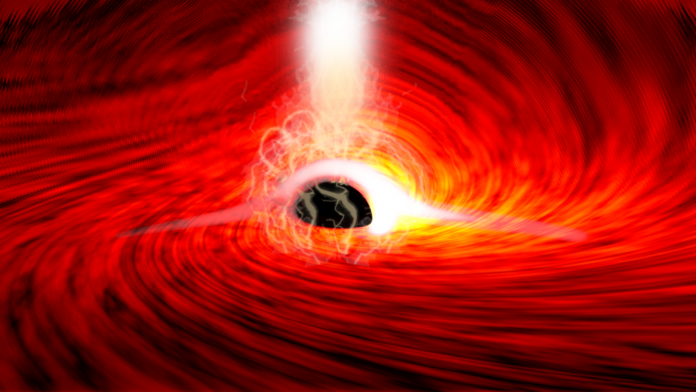
A Stanford University astrophysicist, Dan Wilkins, observed the first detection of light from behind a black hole – proving that Einstein’s general theory of relativity works
Material falling into a supermassive black hole powers the brightest continuous sources of light in the universe, and as it does so, forms a corona around the black hole. This light can then be analysed to map and characterise a black hole.
‘Any light that goes in’ doesn’t come out
This is the first time in history that the light bending around a black hole has been visible. Before now, it has simply been theoretically possible.
The leading theory for what a corona is starts with gas sliding into the black hole where it superheats to millions of degrees. At that temperature, electrons separate from atoms, creating a magnetised plasma.
“Any light that goes into that black hole doesn’t come out, so we shouldn’t be able to see anything that’s behind the black hole,” said Wilkins, who is a research scientist at the Kavli Institute for Particle Astrophysics and Cosmology at Stanford and SLAC National Accelerator Laboratory.
“The reason we can see that is because that black hole is warping space, bending light and twisting magnetic fields around itself.”
‘They had no idea’ it was possible to see this
Caught up in the powerful spin of the black hole, the magnetic field arcs so high above the black hole, and twirls about itself so much, that it eventually breaks altogether – a situation so reminiscent of what happens around our own Sun that it borrowed the name “corona.”
Roger Blandford, a co-author of the paper who is the Luke Blossom Professor in the School of Humanities and Sciences, Stanford professor of physics and SLAC professor of particle physics and astrophysics, said: “Fifty years ago, when astrophysicists starting speculating about how the magnetic field might behave close to a black hole, they had no idea that one day we might have the techniques to observe this directly and see Einstein’s general theory of relativity in action.










